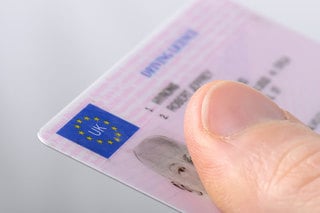The benefits of implementing a robust driver training strategy are clear.
Whether it’s to improve the safety and welfare of staff as well as cutting costs through reducing collisions, achieving savings through greater fuel efficiency, or improving usage of electric vehicles, the right training can have wide-reaching impacts.
Identify training needs
The first step when implementing a driver training strategy is to identify what the organisation wants to achieve, whether it is reduced collisions, lower fuel costs, transitioning to electric vehicles or something else altogether.
Training needs can be identified through a detailed risk assessment, assigned to every employee who drives as part of their job.
This can form part of an employee’s induction and should be routinely revisited at regular intervals to take into account changes in each driver’s circumstances, such as any additional points on their licence since the last check.
Aggregating the various factors into a risk score can help fleet managers identify drivers with a high overall risk level.
Each individual driver’s performance in each area of the risk assessment can then be examined to identify specific training needs.
The use of telematics to monitor driver behaviour is one of the most common methods to record useful data.
For safety, the information gathered could be speed, harsh braking, acceleration or cornering.
A similar process can be used for other areas: for example, fuel usage and mileage can be used to identify which drivers would benefit from eco-driver training.
For electric vehicles, many drivers will be experiencing the technology for the first time and as there are a number of small but important differences between them and ICE vehicles, training may be required.
These include greater instant acceleration, more deceleration when lifting off the accelerator due to regenerative braking and how they are refuelled. All have safety or efficiency ramifications.
As well as equipping drivers with the skills to drive an EV efficiently and safely, training can also help overcome range anxiety; consistently cited as one of the major obstacles to widescale EV uptake.
Ideally drivers will receive EV training before they are handed the keys to their vehicle so they know how to get the most out of it before any bad habits set it.
This can also reduce the risk by ensuring they are not distracted while driving by any new or unfamiliar technologies or controls.
It also enables them to make necessary adjustments to their routine and working procedures prior to getting behind the wheel.
Identify the right training method
The best training method will invariably depend on a combination of each driver’s individual performance in the risk assessment and the relevance of the training to their working life.
Low-risk drivers might require only nudge-based online training, whereas seriously at-risk drivers may require extended on-road training.
For example, a high-mileage driver with a high-risk rating may be best suited to receiving an in-vehicle session as it provides a hands-on experience, with direct feedback from a professional fleet trainer.
For drivers falling into lower risk categories, or those with very specific requirements, bite-size training interventions such as e-learning modules or webinars may be more appropriate.
A group of occasional drivers identified as having a moderate risk rating, but also a shared history of speeding endorsements, might benefit most from a group session on speed management.
This kind of training course can be delivered as a webinar, which is handy for remote workers and is also far less time-consuming and costly compared with an on-road course.
Group webinars also represent more of a light-touch approach that may be more appropriate for those who drive for work only occasionally.
Implement the driver training plan
Implementations should be straightforward once objectives and training methods have been identified.
Driver buy-in can sometimes be an issue for any training plan, as some employees are reluctant to take part or do not believe they need to improve.
To overcome this, fleets may need to quantify their objectives and then ensure that any reporting that takes place is carried out against that process.
If possible, ensure that any training should be enjoyable and a benefit to the trainee, seen as a reward rather than a punishment.
Training completed when a driver is engaged and positive is always more effective – it comes back to creating a proactive environment and culture in the business and completing training before it is required.
It should be made clear that providing driver training is not only an important part of fulfilling the requirements of workplace safety legislation, it is also intrinsic to the duty of care obligations every business has for its employees.
There is a cost to using any external training provider and fleet decision-makers must factor this into budgets.
Continuing education
The task of training drivers to improve does not end after training is given.
Driver performance should be constantly monitored to ensure the training has long-lasting effects, with refreshers given if necessary.
Ongoing education can also keep the message fresh in their minds, and this could be through posters at the depot, regular emails to drivers, or postings on the organisation’s intranet or MS Teams.






















Login to comment
Comments
No comments have been made yet.